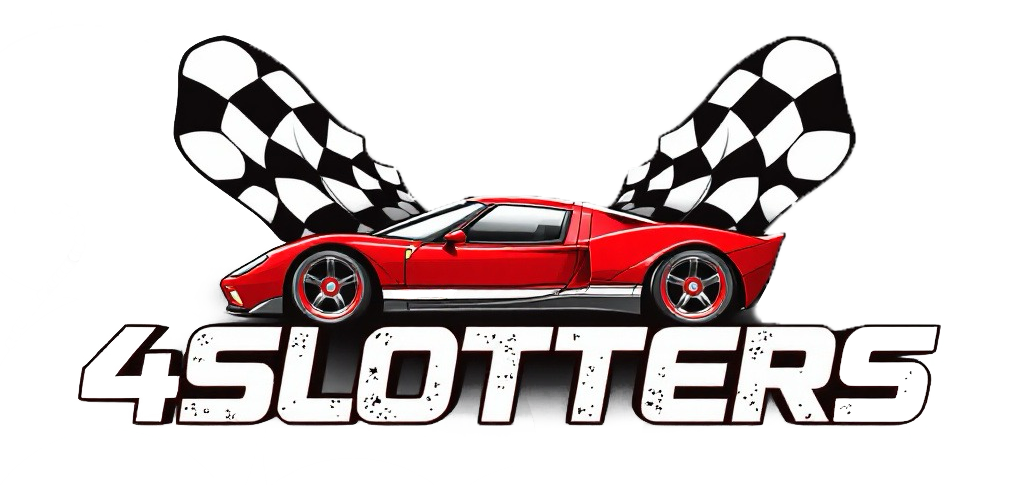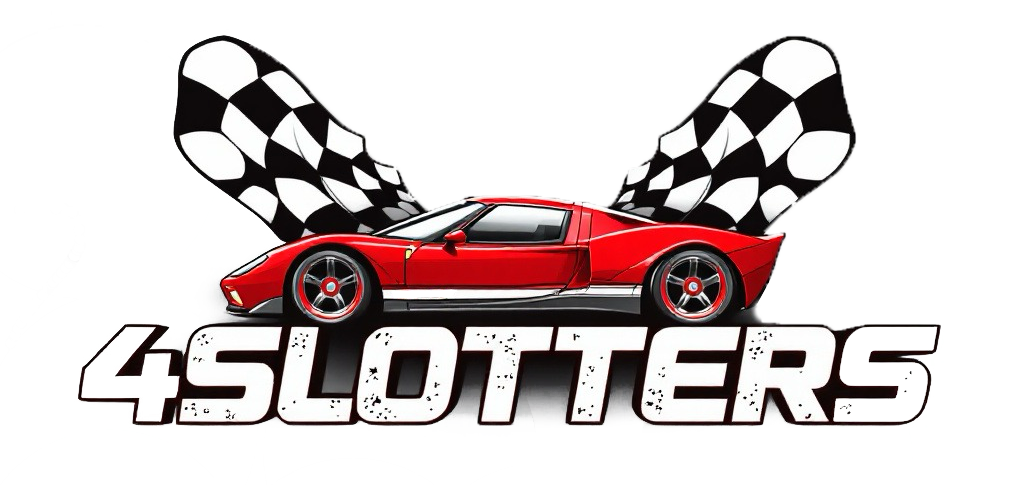Creating the perfect slot car track layout is both an art and a science. Whether you're planning your first home setup or designing your ultimate dream track, this comprehensive guide will walk you through everything you need to know about slot car track design. From basic principles to advanced techniques, we'll help you create a layout that provides maximum enjoyment and racing excitement.
Before diving into specific layouts, it's important to understand what makes a track design successful:
- Flow: How smoothly cars can navigate the entire circuit
- Challenge: The right balance of technical sections and straightaways
- Variety: Different types of corners and racing lines
- Overtaking Opportunities: Places where skilled drivers can pass
- Visual Appeal: Aesthetic layout with pleasing proportions
- Practical Considerations: Fits available space and budget
Modern slot car track systems typically include these basic components:
- Straight Sections: Available in various lengths
- Curves: Different radius turns (tight, standard, wide)
- Special Sections: Crossovers, lane changers (digital), chicanes, banked curves
- Accessories: Borders, barriers, bridges, elevation supports
Understanding the properties and limitations of your chosen track system is essential for successful design.
The first step in track design is determining your available space:
- Measure Your Space: Get exact dimensions of the area where your track will be located
- Consider Access: Allow room to reach all parts of the track for maintenance
- Account for Furniture: Factor in any permanent fixtures in the room
- Think Vertically: Consider using elevation changes to maximize limited space
- Permanent vs. Temporary: Decide if your track will be permanent or disassembled after use
Your choice of scale affects the size and complexity of your layout:
- HO Scale (1:64): Requires the least space, allowing complex layouts in limited areas
- 1:43 Scale: Moderate space requirements with good detail
- 1:32 Scale: The most popular home scale, requiring more substantial space
- 1:24 Scale: Largest common scale, needs significant space for an enjoyable layout
For detailed information on choosing the right scale, see our Understanding Slot Car Scales guide.
Different manufacturers offer track systems with unique characteristics:
- Scalextric Sport/Digital: Moderate curve radius options, good digital features
- Carrera Evolution/Digital: Wider track with larger curve radius, excellent for beginners
- Ninco: Known for realistic track surface texture and good handling
- AFX/Tomy: Popular for HO scale with numerous configuration options
At 4slotters.com, we offer multiple track systems to suit different preferences and requirements.
The simplest layout, perfect for beginners or limited space:
- Characteristics: Two straights connected by curves at each end
- Racing Experience: High-speed, emphasizes acceleration and braking
- Space Required: Minimal, can fit on a 4' x 8' board for most scales
- Expandability: Easily modified with additional sections as space allows
A classic design that adds crossing excitement:
- Characteristics: Crossing in the center creates overtaking opportunities
- Racing Experience: Adds collision risk and strategy
- Space Required: Similar to oval but slightly more efficient use of space
- Variations: Can be created with bridge crossover or flat crossing with digital lane-changing
Popular for balancing straight speed with cornering challenges:
- Characteristics: Two larger areas connected by parallel straights
- Racing Experience: Good mix of speed and technical driving
- Space Required: Moderate, fits well on a 5' x 9' table for 1:32 scale
- Advantages: Efficient use of space while providing varied driving experience
Inspired by real-world racetracks:
- Characteristics: Continuous loop with varied corners and straights
- Racing Experience: Most realistic racing feel
- Space Required: Varies based on complexity
- Variations: Can be designed to mimic famous real-world circuits
Adding a third dimension to your layout:
- Bridges and Underpasses: Create crossovers without lane merging
- Banked Turns: Increase cornering speed and excitement
- Elevation Transitions: Challenging uphill and downhill sections
- Construction Tips:
- Use proper supports designed for your track system
- Maintain gradual elevation changes (maximum 15% grade)
- Ensure smooth transitions between flat and elevated sections
Creating a layout with satisfying racing lines:
- Corner Sequencing: Position turns to create flowing sequences
- Braking Zones: Include adequate straight sections before tight corners
- Acceleration Zones: Place straights after corners to reward good exits
- Overtaking Spots: Design wider corners or longer straights where passing is possible
Adding challenging elements for skilled drivers:
- Chicanes: Series of alternating turns that require precise driving
- Hairpins: Very tight turns that test braking and acceleration
- Esses: Series of S-curves that test smooth steering control
- Bus Stop: Sharp chicane that requires significant speed reduction
For digital systems with lane-changing capability:
- Lane Changer Placement: Strategic positioning for overtaking opportunities
- Pit Lane Integration: Adding pit stops for fuel and tire management
- Multiple Car Planning: Designing for more than two cars simultaneously
- Detection Section Placement: Proper positioning of sensors for timing systems
For more information on digital systems, see our Digital vs. Analog Slot Car Systems guide.
Inspired by Formula 1 tracks:
- Characteristics: Long straights, technical corner combinations, chicanes
- Key Features: Pit lane, grandstands, timing tower
- Scenery Ideas: Race marshals, crowd figures, advertising hoardings
- Example Layout: 12' x 4' with 9-10 corners and one main straight
Capturing the excitement of rally racing:
- Characteristics: Narrow, twisting layout with varied surfaces
- Key Features: Jump sections, water splash, hairpin turns
- Scenery Ideas: Trees, rocks, spectator points, service area
- Example Layout: 10' x 6' with multiple elevation changes
Designed for long-distance racing:
- Characteristics: Balanced layout with moderate corners and good flow
- Key Features: Well-designed pit lane, multiple racing lines
- Scenery Ideas: Day/night lighting, pit crews, timing boards
- Example Layout: 16' x 8' with 12-15 corners and varied straight lengths
Recreating urban racing environments:
- Characteristics: Tight corners, short straights, narrow sections
- Key Features: Buildings close to track edge, street furniture
- Scenery Ideas: Urban buildings, barriers, bridges, spectators
- Example Layout: 8' x 4' with many corners and minimal straights
Browse our scenery collection to find items perfect for enhancing your themed layout.
Creating a solid foundation for your track:
- Materials:
- Plywood (minimum 1/2" thickness)
- MDF (medium-density fiberboard)
- Extruded polystyrene foam (for elevation changes)
- Size Considerations:
- Standard sheet sizes: 4' x 8' (most common)
- Consider using multiple boards for larger layouts
- Account for table or support structure underneath
- Surface Preparation:
- Sand edges and surfaces smooth
- Paint or cover with felt/cloth for finished appearance
- Consider sound dampening materials underneath
Keeping your track firmly in place:
- Temporary Setups:
- Track pins or clips provided by manufacturer
- Removable tape for additional security
- Weighted objects at key points
- Permanent Installations:
- Screws with washers (drill pilot holes in track)
- Construction adhesive for permanent attachment
- Silicone caulk for semi-permanent installation
Ensuring reliable electrical performance:
- Power Distribution:
- Add power taps every 10-15 feet of track
- Use heavier gauge wire for main power runs
- Consider separate power districts for large layouts
- Controller Connections:
- Position driver stations for good track visibility
- Use consistent color coding for wiring
- Consider driver comfort and spacing
- Digital System Wiring:
- Follow manufacturer recommendations precisely
- Keep control unit accessible for programming
- Plan for future expansion
Digital tools to design before building:
- Manufacturer-Specific Tools:
- Scalextric Track Designer
- Carrera Track Planner
- Ninco Track Designer
- Third-Party Software:
- Ultimate Racer
- SlotMan
- RailModeller Pro (works for slot cars too)
- Benefits of Digital Planning:
- Precise inventory of required pieces
- Virtual testing before purchasing
- Easy sharing and modification of designs
Problems that affect racing enjoyment:
- Too Many Corners: Creates stop-start racing without flow
- Inadequate Straight Sections: Prevents cars from reaching enjoyable speeds
- Unbalanced Lane Lengths: Creates unfair advantage for one lane
- Poor Visibility: Sections where drivers can't see their cars clearly
- Inaccessible Areas: Parts of the track that can't be reached for car retrieval
Physical issues that affect performance:
- Uneven Joints: Create bumps that can cause deslotting
- Inadequate Power Distribution: Results in slow spots on the track
- Insufficient Support: Leads to track flexing during use
- Poor Electrical Connections: Causes intermittent power issues
- Inadequate Barriers: Results in cars flying off the table
Having issues with your existing track? Check out our Troubleshooting Common Slot Car Problems guide.
Regular maintenance for optimal performance:
- Cleaning Schedule: Regular track cleaning to maintain conductivity
- Joint Inspection: Checking and repairing track connections
- Electrical Testing: Verifying consistent power throughout the layout
- Scenery Upkeep: Repairing and refreshing scenic elements
For more detailed maintenance information, see our Slot Car Maintenance Guide.
How to grow and improve your track over time:
- Modular Design: Creating sections that can be reconfigured
- Expansion Planning: Designing with future growth in mind
- Upgrade Paths: Considering digital conversion or additional features
- Documentation: Keeping records of your layout and changes
Designing and building a slot car track is a rewarding project that combines creativity, technical knowledge, and racing passion. Whether you're creating a simple oval for casual fun or an elaborate permanent installation, the principles in this guide will help you create a layout that provides years of racing enjoyment.
Remember that the perfect track is one that suits your specific interests, available space, and budget. Don't be afraid to start simple and expand as your experience and enthusiasm grow.
At 4slotters.com, we offer all the track components, accessories, and scenery items you need to create your dream layout. Browse our Track section and Scenery collection to find everything required for your project.








